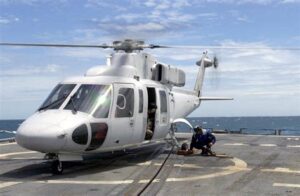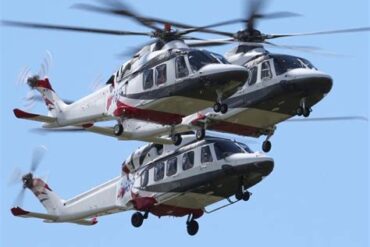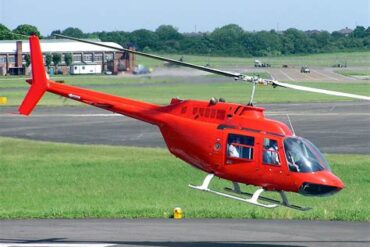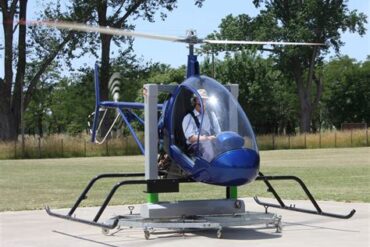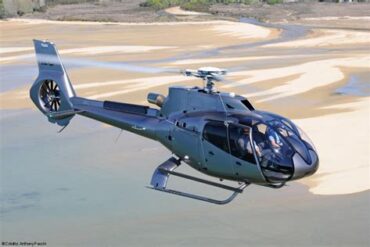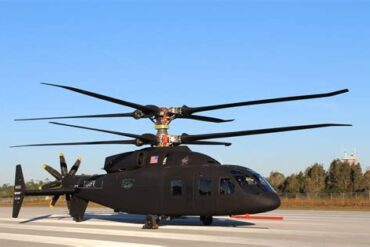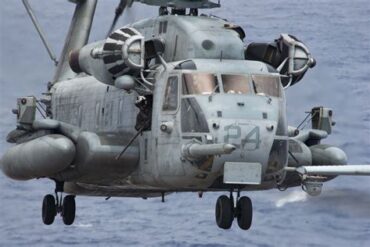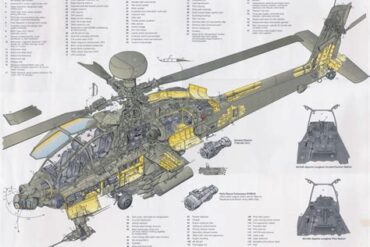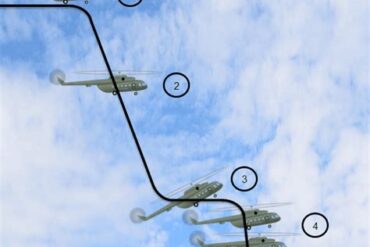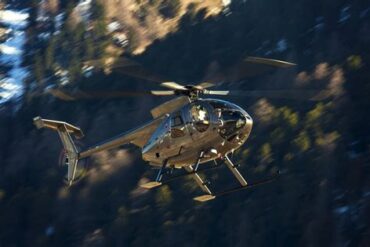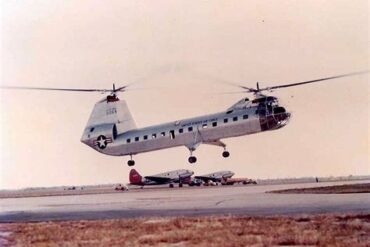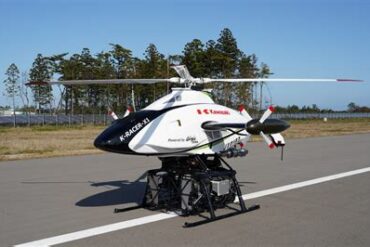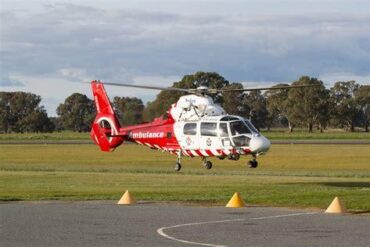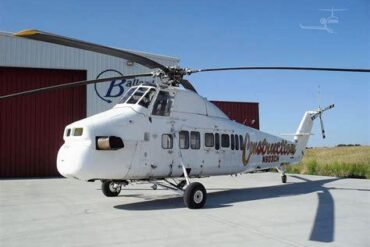Sikorsky Helicopters, a name synonymous with innovation and excellence in the aviation industry, has been a pioneer in rotary-wing aircraft technology since its inception. Founded by Igor Sikorsky in 1923, the company has played a pivotal role in shaping modern aviation. Known for their reliability, durability, and cutting-edge technology, Sikorsky helicopters are utilized in a wide range of applications, including military operations, search and rescue missions, and commercial transport.
History and Evolution of Sikorsky Helicopters
Early Innovations and Milestones
The journey of Sikorsky Helicopters began with the VS-300, the first successful single-rotor helicopter, which made its maiden flight in 1939. This groundbreaking achievement marked the beginning of a new era in aviation. The VS-300 was followed by the R-4, the world’s first mass-produced helicopter, which became a crucial asset during World War II. The R-4 was utilized for rescue missions, artillery spotting, and other essential tasks, proving the value of helicopters in military operations.
As technology advanced, so did Sikorsky’s designs. The introduction of the S-55 in the early 1950s revolutionized helicopter design with its nose-mounted engine and innovative rotor configuration. This design became the foundation for many subsequent models and set new standards in the industry. Sikorsky continued to innovate with the S-58, which introduced the concept of a helicopter being used for civilian transport, marking a significant shift in the perception of rotary-wing aircraft.
The Vietnam War and the Development of the UH-60 Black Hawk
The Vietnam War was a turning point for Sikorsky Helicopters. The demand for reliable and versatile aircraft led to the development of the UH-60 Black Hawk, one of the most iconic helicopters in history. Introduced in the 1970s, the Black Hawk quickly became the backbone of the U.S. Army’s helicopter fleet. Its design emphasized survivability, with features such as crash-resistant fuel systems, armored seats, and advanced avionics.
The Black Hawk’s success extended beyond military applications. It was adapted for civilian use, where it became popular for law enforcement, firefighting, and medical evacuation missions. The versatility and reliability of the UH-60 have made it a global symbol of rotary-wing excellence, with over 4,000 units produced to date.
Advancements in Technology and Modern Sikorsky Models
Sikorsky has remained at the forefront of helicopter innovation by incorporating advanced technologies into its designs. The introduction of fly-by-wire systems, composite materials, and advanced avionics has significantly enhanced the performance and safety of modern Sikorsky helicopters. The S-92, introduced in the early 2000s, is a prime example of these advancements. Designed for offshore oil transport and search and rescue missions, the S-92 offers superior range, payload capacity, and safety features compared to its predecessors.
Another notable model is the CH-53K King Stallion, the latest iteration of the CH-53 series. The King Stallion is the most powerful and technologically advanced helicopter in the U.S. military’s fleet, capable of lifting up to 36,000 pounds. It features state-of-the-art fly-by-wire controls, composite rotor blades, and an advanced cockpit with enhanced situational awareness capabilities. The CH-53K is a testament to Sikorsky’s commitment to pushing the boundaries of helicopter technology.
Sikorsky Helicopters in Military Operations
The Role of Sikorsky Helicopters in Modern Warfare
Sikorsky helicopters have played a crucial role in modern warfare, providing unparalleled mobility, firepower, and support to armed forces around the world. The UH-60 Black Hawk, in particular, has been the workhorse of the U.S. Army for decades, performing a wide range of missions, from troop transport to medevac operations. The Black Hawk’s adaptability and rugged design make it ideal for operating in harsh environments, whether it’s the deserts of the Middle East or the dense jungles of Southeast Asia.
In addition to the Black Hawk, Sikorsky’s CH-53E Super Stallion has been a vital asset for the U.S. Marine Corps. Known for its heavy-lift capabilities, the Super Stallion has been used to transport troops, vehicles, and supplies in combat zones. Its ability to operate in extreme conditions, including high altitudes and hot climates, makes it an indispensable tool for military logistics and support operations.
Specialized Military Applications
Sikorsky helicopters are also used in specialized military applications, such as search and rescue (SAR) missions, combat search and rescue (CSAR), and special operations. The HH-60 Pave Hawk, a variant of the Black Hawk, is specifically designed for CSAR missions, equipped with advanced avionics, defensive systems, and long-range fuel tanks. The Pave Hawk has been used in numerous high-stakes operations, where its ability to penetrate enemy territory and extract personnel under fire has proven invaluable.
Another specialized application is the use of Sikorsky helicopters for naval operations. The SH-60 Seahawk, a maritime version of the Black Hawk, is employed by the U.S. Navy for anti-submarine warfare, search and rescue, and logistics support. The Seahawk’s versatility and advanced sensors make it a key component of naval aviation, capable of operating from both land and sea-based platforms.
Civilian Applications of Sikorsky Helicopters
Commercial Transport and Offshore Operations
While Sikorsky helicopters are renowned for their military applications, they also play a significant role in civilian operations. One of the primary uses of Sikorsky helicopters in the civilian sector is offshore oil and gas transport. The S-92, in particular, is widely used for transporting personnel and equipment to offshore oil rigs. Its long-range capabilities, coupled with advanced safety features, make it the helicopter of choice for operators working in remote and challenging environments.
In addition to offshore operations, Sikorsky helicopters are also used for executive transport. The S-76, a popular model in this category, offers a luxurious and comfortable interior, making it a favorite among corporate clients and VIPs. The S-76’s reputation for safety, reliability, and performance has earned it a loyal customer base, with many high-profile individuals and organizations choosing it for their transportation needs.
Search and Rescue Missions
Sikorsky helicopters are also extensively used in search and rescue (SAR) missions around the world. The S-92, equipped with advanced sensors and communication systems, is particularly well-suited for SAR operations in both maritime and mountainous environments. Its ability to operate in adverse weather conditions, combined with its spacious cabin, allows for the transport of rescued individuals and medical personnel, making it an invaluable asset in emergency situations.
The S-70 Firehawk, a variant of the Black Hawk, is another Sikorsky helicopter widely used in firefighting and disaster response missions. The Firehawk is equipped with a specialized water tank system that allows it to drop large quantities of water on wildfires, helping to contain and extinguish fires in hard-to-reach areas. Its versatility and robustness make it an essential tool for firefighting agencies worldwide.
Technological Innovations and Future Prospects
Advancements in Avionics and Autonomous Flight
Sikorsky has consistently pushed the envelope when it comes to technological innovation. One of the most significant advancements in recent years is the development of autonomous flight capabilities. The MATRIX™ Technology, developed by Sikorsky, is a cutting-edge system that enables autonomous and optionally piloted operations. This technology has the potential to revolutionize the future of rotary-wing aviation, allowing helicopters to operate in environments that are too dangerous or complex for human pilots.
In addition to autonomous flight, Sikorsky is also investing in advanced avionics and communication systems. The development of the Advanced Flight Control System (AFCS) and the integration of modern glass cockpits have significantly enhanced the situational awareness and operational capabilities of Sikorsky helicopters. These advancements not only improve safety but also increase the efficiency and effectiveness of helicopter operations.
Sustainability and the Future of Sikorsky Helicopters
As the aviation industry moves towards more sustainable practices, Sikorsky is also exploring ways to reduce the environmental impact of its helicopters. The company is investing in research and development to create more fuel-efficient engines and incorporate lightweight, composite materials into its designs. These efforts are aimed at reducing the carbon footprint of Sikorsky helicopters while maintaining their high-performance standards.
Looking ahead, Sikorsky is poised to continue its leadership in the helicopter industry. With ongoing advancements in technology, a commitment to innovation, and a focus on sustainability, Sikorsky helicopters will remain at the forefront of rotary-wing aviation for decades to come.
Conclusion
Sikorsky Helicopters has a storied history of innovation and excellence in the aviation industry. From its early days as a pioneer in rotary-wing aircraft to its current status as a leader in advanced helicopter technology, Sikorsky has consistently pushed the boundaries of what is possible. Whether in military operations, civilian transport, or search and rescue missions, Sikorsky helicopters have proven their worth time and time again. With a bright future ahead, Sikorsky is set to continue its legacy as a trailblazer in the world of aviation.
